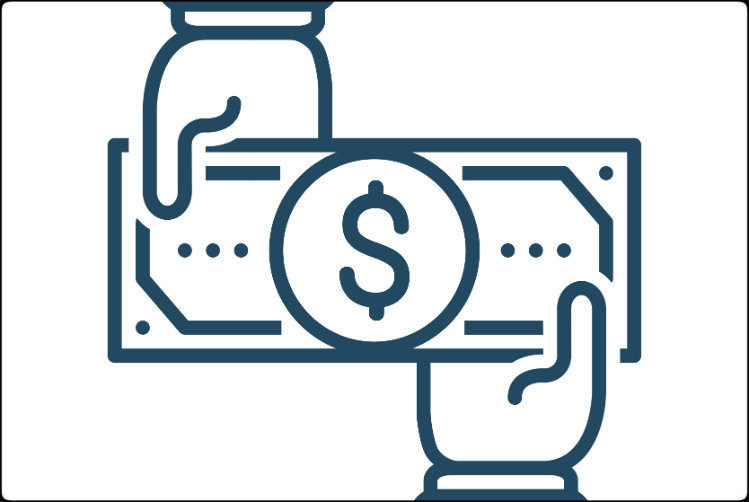Can I Borrow from an IRA?
The short answer is no. You cannot borrow any money from any type of IRA. That includes:
- Traditional IRA
- Roth IRA
- SEP IRA
- SIMPLE IRA
You can, however, borrow funds with a 401(k). The ability to borrow funds is one of the main advantages of establishing a 401(k) plan versus an IRA (individual retirement account).
Solo 401(k) Loan
Internal Revenue Code Section 72(p) allows a Solo 401(k) Plan participant to take a loan from his or her 401(k) Plan. The loan must be permitted pursuant to the business’ 401(k) plan documents.
It’s important to note, in order to be eligible to establish a Solo 401(k), you must have a business with no full-time employees other than yourself, another business partner, or a spouse.
Otherwise, if you have access to a 401(k) plan at work that has a loan feature, taking a loan from your employer’s 401(k) plan can prove to be a tax-efficient option.
You can use a Solo 401(k) loan at any time using the accumulated balance of the Solo 401(k) collateral for the loan. A solo 401(k) participant can borrow up to either $50,000 or 50% of their account value. This depends on whichever is less.
You must repay the loan over an amortization schedule of five years or less with a payment frequency no less than quarterly. The lowest interest rate that can be used is prime as per the Wall Street Journal.
Using IRA Funds is a Distribution
What are your options if you need to tap into your IRA funds and use them for personal purposes, such as paying off a credit card bill, student loan, or even a mortgage payment?
Unfortunately, when an IRA holder takes money out of his or her IRA for personal use, this is referred to as a “distribution.” Taking a distribution from your IRA could have significant tax ramifications, including no longer benefiting from the power of tax-deferral. In addition, the future value of the remaining IRA will be impacted.
Two Options Before Taking a Distribution from a Self-Directed IRA
1. Beware of Tax & Potential Penalties
In the case of a pre-tax IRA, you can withdraw or take a distribution of traditional IRA assets at any time. However, a 10% additional tax generally applies if you withdraw or take a distribution of IRA assets before you reach age 59 1/2.
In other words, if you take a distribution of IRA funds prior to reaching 59 1/2, you may have to pay ordinary income tax on the amount of the distribution plus a 10% early distribution penalty. The amount of the distribution would be added to the individual income to determine the income tax rate that would be applied to the distribution.
If you take a distribution of traditional IRA (pre-tax) assets after the age of 59 1/2, you may have to pay ordinary income tax on the amount of the distribution. Again, the amount of the distribution would be added to the individual’s taxable income to determine the income tax rate that would apply.
Whereas, in the case of a Roth IRA, if you take a distribution prior to age 59 1/2 and did not open and fund a Roth IRA for at least five years prior, the earnings on the Roth IRA contributions will be subject to ordinary income tax. Additionally, you will need to pay a 10% early distribution penalty.
The amount you contribute to a Roth IRA can always be distributed without tax. In other words, if a Roth IRA holder wants a guarantee that the earnings on the Roth IRA contributions will also be available for distribution with tax or penalty (a qualified distribution), then you must be at least 59 1/2 and the Roth IRA open and funded for at least five years prior to the distribution.
2. You may have Options
In some cases, you may be able to access retirement funds in a more tax efficient manner than taking a fully taxable distribution. You can take a 401(k)-plan loan, electing the substantial equal periodic payment option, or satisfying the hardship distribution rules.
Loan
If you participate in a 401(k) plan that offers a loan option, you have the ability to borrow up to $50,000 or 50% of your account value, whichever is less. This occurs without tax or penalty.
Substantially Equal Payments
If distributions are made as part of a series of substantially equal periodic payments over your life expectancy or the life expectancies of you and your designated beneficiary (minimum five years or until the IRA owner reaches age 59½, whichever is longer), the distribution could still be subject to tax depending on the type of IRA. However, the 10% early distribution penalty would not apply.
Hardship Distribution
An IRA hardship distribution is a withdrawal from a participant’s IRA because of specified reasons outlined pursuant to Internal Revenue Code Section 72(t). This includes:
- Immediate and heavy financial need
- Unreimbursed medical expenses exceeding 7.5% of your Adjusted Gross Income (AGI)
- Qualified higher education expenses
- The payment of medical insurance premiums after losing your job
Related: Solo 401(k) Distribution Rules
First Home Purchase
You can take an IRA distribution of up to $10,000 per IRA account in regard to a first home purchase without the 10% early distribution penalty.
Before taking an IRA distribution and potentially triggering a tax and 10% early distribution penalty, there may be more tax-efficient options available. Preserving your IRA is a great way to help save for retirement. Accordingly, you should be careful before taking a voluntary IRA distribution.
Related: Tips for Making Investments with a Solo 401(k)
To Summarize
If you are in need of funds from your IRA, borrowing from your IRA will not be an option. If you are self-employed or have access to a 401(k) plan with a loan option, the loan feature can be a viable option.
Otherwise, taking a distribution from your IRA may be your only option.
Get in Touch
If you still have questions about borrowing from an IRA and the Solo 401(k) loan, we encourage you to contact IRA Financial Group directly at 800-472-0646. You can also speak with a 401(k) specialist today by filling out the form.











